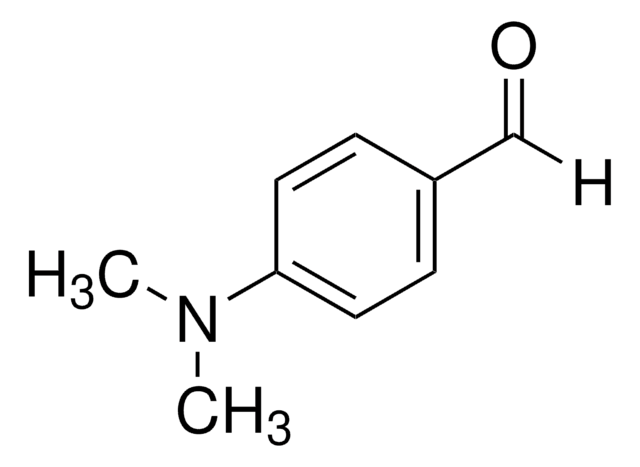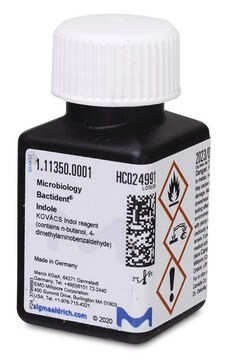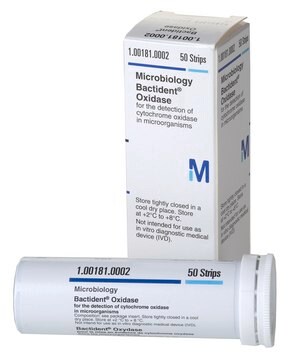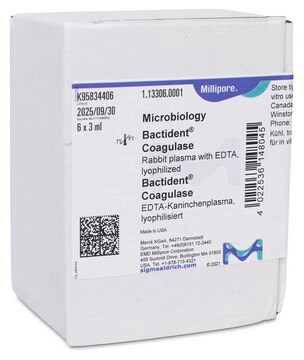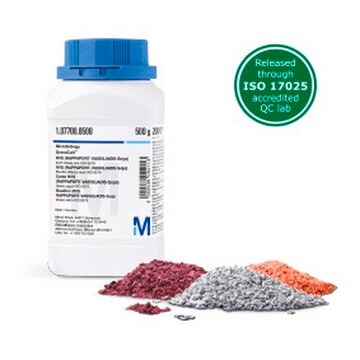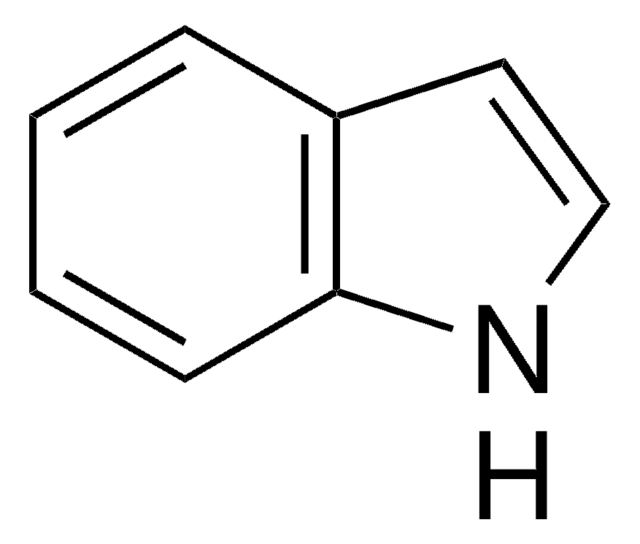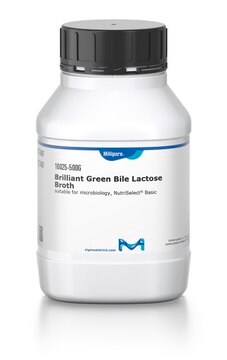1.09293
KOVACS′ indole reagent
for detecting microbial indole in the identification of indole-positive and indole-negative microorganisms, suitable for microbiology
别名:
4-(Dimethylamino)benzaldehyde solution, Indole reagent, Kovac′s reagent, Kovac′s reagent for indoles
登录查看公司和协议定价
所有图片(1)
About This Item
分類程式碼代碼:
41106212
NACRES:
NA.21
推荐产品
品質等級
形狀
liquid
包裝
pkg of 100 mL
技術
microbe id | specific enzyme detection: suitable
顏色
yellow
pH值
<1 (20 °C in H2O)
轉變溫度
flash point 36 °C
密度
0.92 g/cm3 at 20 °C
應用
microbiology
儲存溫度
2-8°C
適合性
Escherichia coli
enterovirulent E. coli (EEC) spp.
一般說明
Kovac′s reagent is a biochemical reagent composed of n-Butanol, hydrochloric acid, and 4-dimethylaminobenzaldehyde. It is used for the detection of indole producing microorganisms. Tryptophan is abundant in trypticalle digested peptone. Some microorganisms can cleave tryptophan to give pyruvic acid, ammonia, and indole. Indole then reacts with 4-dimethylaminobenzaldehyde to form a dark red dye. As tryptophan also gives a color reaction with 4 dimethylaminobenzaldehyde, it must be separated from the indole. This is achieved by selectively extracting indole with butanol.
應用
Kovac′s Indole reagent is used for the detection of indole producing microorganisms in food and beverages, and environmental samples. This is suitable for the identification of E. coli.
儲存和穩定性
No metal containers. Keep the container tightly closed in a dry and well-ventilated place. Keep away from heat and sources of ignition
分析報告
Indole formation (Escherichia coli ATCC 25922 (WDCM 00013)): +
Indole formation (Proteus vulgaris ATCC 8427): +
Indole formation (Enterobacter aerogenes ATCC 13048): -
Tested in DEV-Tryptophan broth art. no. 1.10694. (after incubation 24 hrs.; 35 °C aerobic).
Indole formation (Proteus vulgaris ATCC 8427): +
Indole formation (Enterobacter aerogenes ATCC 13048): -
Tested in DEV-Tryptophan broth art. no. 1.10694. (after incubation 24 hrs.; 35 °C aerobic).
其他說明
The reagent solution must be stored in the dark in the refrigerator, otherwise it may turn brown and cannot be used.
訊號詞
Danger
危險分類
Acute Tox. 4 Oral - Eye Dam. 1 - Flam. Liq. 3 - Met. Corr. 1 - Skin Corr. 1 - Skin Sens. 1
儲存類別代碼
3 - Flammable liquids
水污染物質分類(WGK)
WGK 1
閃點(°F)
96.8 °F
閃點(°C)
36 °C
其他客户在看
实验方案
Specifies a horizontal method for the detection of Salmonella spp. in the food production chain.
我们的科学家团队拥有各种研究领域经验,包括生命科学、材料科学、化学合成、色谱、分析及许多其他领域.
联系技术服务部门